What's New
Displaying results 3831 - 3840 of 4052
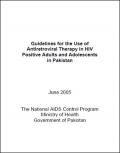
Resource | Publications,
Successful treatment of HIV/AIDS depends on strict adherence by HIV positive patients in taking their medications as instructed and for health care providers to recommend antiretroviral treatment (ART) based on rigorous scientific evidence. The devastating consequences of incorrect or partial HIV treatment are premature death, increased morbidity, development of drug resistant HIV strains, and lack of further treatment options.
The main purpose of these guidelines is to assist health care providers in determining the optimal ART regimen for their HIV positive patients and to provide recommendations for standardized quality of care. We hope that compliance with the guidelines will reduce the risk of treatment failures, prevent ART resistance and in the long term enable Pakistan to successfully contain the HIV/AIDS epidemic.
It is crucial to for health care providers and patients to understand that treatment and care of HIV is an evolving science. While these guidelines contain the latest recommended ART practices, they are a living document. The National AIDS Control Program would like to emphasize that these guidelines will be regularly revised and updated to incorporate new information and best practices.
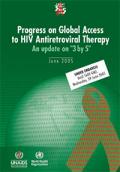
Resource | Publications,
Since late 2003, when WHO and UNAIDS launched a strategy for ensuring treatment for 3 million people living with HIV/AIDS in low- and middle-income countries by the end of 2005 (the "3 by 5" target), coverage of antiretroviral therapy (ART) in these countries has more than doubled – increasing from 400 000 to approximately 1 million people receiving treatment at the end of June 2005. To date, 14 of these countries are providing ART to at least 50 per cent of those who need it, consistent with the "3 by 5" target.
This interim report on global efforts to increase access to ART focuses primarily on understanding the reasons for the successes and failures of scaling up HIV/AIDS interventions in different settings. The report also makes recommendations concerning the approaches needed to overcome major bottlenecks, as well as the need for sustainable financing mechanisms and greater harmonization of effort by technical and financing partners at country level. A comprehensive report and country-specific analysis of access efforts and obstacles that remain will be released at the end of 2005.
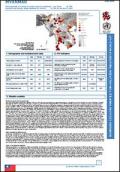
Resource | Publications,
With national estimated prevalence of between 0.6% and 2.2%, Myanmar is experiencing a generalized epidemic, considered one of the most serious in Asia. The Ministry of Health estimates that 338,911 adults aged 15–49 years old were living with HIV/AIDS in September 2004, of which 96,834 (28.6%) were women, indicating a total adult prevalence rate of 1.3%. HIV infection rates vary across the country, with several regions showing considerable increases in prevalence rates among less vulnerable populations. According to the Ministry of Health, in 2003, 12 of 29 sentinel sites for pregnant women showed a prevalence of HIV infection exceeding 2%. At Pyay and Hpa-an, prevalence rates among pregnant women were as high as 5% and 7.5% respectively.
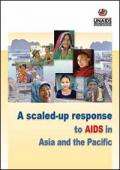
Resource | Publications,
The countries of Asia and the Pacific stand at a crossroads, facing two diverging routes to the future. One route is “business as usual”. Though the easiest and cheapest route to take at the beginning, it ends up in rising levels of HIV infection and a toll far higher than the estimated 500 000 AIDS-related deaths that occurred in the region during 2004. The other route is one of determined prevention and care initiatives. Harder and more expensive at the beginning, it ends up stopping the epidemic in its tracks, and minimizing both its human and economic costs.
This report summarizes the AIDS challenge in Asian and Pacific countries. Using the best available evidence, it discusses the reasons why critical services currently reach only a fraction of those in need. It also outlines the action needed that will allow the region to seize this key moment of opportunity.
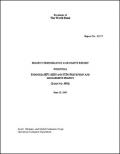
Resource | Publications,
The HIV/AIDS and STDs Prevention and Management Project (HSPMP) aimed to use intensive pilot efforts to achieve two objectives: (a) develop HIV/AIDS and STD institutional mechanisms at the national and provincial levels; and (b) develop interventions capable of reducing transmission of HIV and STDs. The total Project cost of $35.2 million was to be financed with an IBRD loan of $24.8 million and government counterpart funding for the remaining $10.4 million.
The HSPMP represented an effort to address the world-wide AIDS pandemic in Indonesia in the pre-epidemic stage of the disease. Prior to project preparation, in the early-mid 1990s, attention of policy makers in Indonesia and the Bank was gained for early intervention with commercial sex workers through epidemiological projections showing that, with no change in preventive efforts, Indonesia would have 500,000 sexually transmitted HIV infections within four years. These scenarios turned out to be quite inaccurate. Sexually transmitted HIV remains even today at a low level in Indonesia, while HIV transmission associated with drug use has grown rapidly.
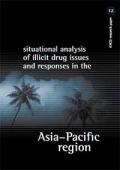
Resource | Publications,
In October 2003 the Prime Minister announced that the Australian National Council on Drugs (ANCD) had been asked to increase Australia’s involvement throughout the Asia–Pacific region, specifically to promote the prevention and reduction of drug use, and treatment for those with drug problems.
The body of this report provides a brief summary of the current illicit drug use situation, country responses to illicit drug issues, and Australian and international involvement in relation to illicit drugs for each country. More detailed analysis about each country, complete with referencing, is contained in Appendix A; and Australian and international project information, available at the time of the research, is outlined in Appendix B. The executive summary gives a broad overview of these data with findings for Asia and the Pacific presented separately.

Resource | Publications,
This study was conducted among 200 street and 300 establishment-based female sex workers (FSWs) and their clients in the Kathmandu Valley.
This was the first round of the integrated bio-behavioral survey (IBBS) conducted among female sex workers and their clients in conjunction with the Behavioral Surveillance Survey in the Kathmandu Valley. The survey was carried out during the months of March and April 2004.
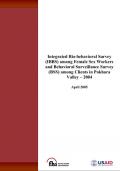
Resource | Publications,
This study was conducted among 200 female sex workers (FSWs) and 400 clients in the Pokhara Valley.
This was the first round of the integrated bio-behavioral survey (IBBS) conducted among female sex workers in Pokhara valley and behavioral surveillance survey among the clients of the female sex workers in the Pokhara valley. The survey was carried out during the months of May and June 2004.
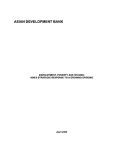
Resource | Publications,
HIV/AIDS is a human tragedy and a real and growing threat to Asia's economic prosperity. It is a fundamental development issue that the Asian Development Bank, as a broad-based development institution focused on poverty alleviation, must address.
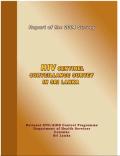
Resource | Publications,
The surveillance of Human Immunodeficiency Virus (HIV) infection is of great value in designing, implementing and monitoring of public health programmes for the prevention and control of HIV infection and the Acquired Immunodeficiency Syndrome (AIDS).
The National STD/AIDS Control Programme (NSACP) of Sri Lanka has been annually conducting HIV Sentinel sero-surveillance since 1993. This survey was initially designed on the guidelines prepared by the World Health Organization (WHO) in 1989. The purpose of HIV sentinel survey is to track HIV infection levels through ‘watch post’ institutions.





